- Home
- Quizzes
- My Quiz Activity
- Newsletters
- Sports Betting
- MY FAVORITES
- Add Sports/Teams
- SPORTS
-
NFL
- NFL Home
- Arizona Cardinals
- Atlanta Falcons
- Baltimore Ravens
- Buffalo Bills
- Carolina Panthers
- Chicago Bears
- Cincinnati Bengals
- Cleveland Browns
- Dallas Cowboys
- Denver Broncos
- Detroit Lions
- Green Bay Packers
- Houston Texans
- Indianapolis Colts
- Jacksonville Jaguars
- Kansas City Chiefs
- Las Vegas Raiders
- Los Angeles Chargers
- Los Angeles Rams
- Miami Dolphins
- Minnesota Vikings
- New England Patriots
- New Orleans Saints
- New York Jets
- New York Giants
- Philadelphia Eagles
- Pittsburgh Steelers
- San Francisco 49ers
- Seattle Seahawks
- Tampa Bay Buccaneers
- Tennessee Titans
- Washington Commanders
-
MLB
- MLB Home
- Arizona Diamondbacks
- Atlanta Braves
- Baltimore Orioles
- Boston Red Sox
- Chicago White Sox
- Chicago Cubs
- Cincinnati Reds
- Cleveland Guardians
- Colorado Rockies
- Detroit Tigers
- Houston Astros
- Kansas City Royals
- Los Angeles Angels
- Los Angeles Dodgers
- Miami Marlins
- Milwaukee Brewers
- Minnesota Twins
- New York Yankees
- New York Mets
- Oakland Athletics
- Philadelphia Phillies
- Pittsburgh Pirates
- San Diego Padres
- San Francisco Giants
- Seattle Mariners
- St. Louis Cardinals
- Tampa Bay Rays
- Texas Rangers
- Toronto Blue Jays
- Washington Nationals
-
NBA
- NBA Home
- Atlanta Hawks
- Boston Celtics
- Brooklyn Nets
- Charlotte Hornets
- Chicago Bulls
- Cleveland Cavaliers
- Dallas Mavericks
- Denver Nuggets
- Detroit Pistons
- Golden State Warriors
- Houston Rockets
- Indiana Pacers
- Los Angeles Clippers
- Los Angeles Lakers
- Memphis Grizzlies
- Miami Heat
- Milwaukee Bucks
- Minnesota Timberwolves
- New Orleans Pelicans
- New York Knicks
- Oklahoma City Thunder
- Orlando Magic
- Philadelphia 76ers
- Phoenix Suns
- Portland Trail Blazers
- Sacramento Kings
- San Antonio Spurs
- Toronto Raptors
- Utah Jazz
- Washington Wizards
-
NHL
- NHL Home
- Anaheim Ducks
- Arizona Coyotes
- Boston Bruins
- Buffalo Sabres
- Calgary Flames
- Carolina Hurricanes
- Chicago Blackhawks
- Colorado Avalanche
- Columbus Blue Jackets
- Dallas Stars
- Detroit Red Wings
- Edmonton Oilers
- Florida Panthers
- Los Angeles Kings
- Minnesota Wild
- Montreal Canadiens
- Nashville Predators
- New Jersey Devils
- New York Islanders
- New York Rangers
- Ottawa Senators
- Philadelphia Flyers
- Pittsburgh Penguins
- San Jose Sharks
- Seattle Kraken
- St. Louis Blues
- Tampa Bay Lightning
- Toronto Maple Leafs
- Vancouver Canucks
- Vegas Golden Knights
- Washington Capitals
- Winnipeg Jets
- NCAAF
- NCAAM
- Boxing
- Entertainment
- Lifestyle
- Golf
- MMA
- Soccer
- Tennis
- Wrestling
- More Sports
- RESOURCES
- My Account
- YB on Facebook
- YB on Twitter
- YB on Flipboard
- Contact Us
- Privacy Policy
- Terms of Service

Defunct MLB ballparks that we still miss
There are plenty of great Major League Baseball parks and stadiums worth visiting in today's game. Something for just about everyone, from the purists to those in need of top-notch amenities. There's also something to be said for celebrating the ballparks of the past.
Here are our rankings of 25 parks and stadiums still worth holding near and dear to our baseball hearts. Dates in parenthesis denote the time frame each venue was prominently used for baseball.
25. Exhibition Stadium (Toronto, 1959-1989)
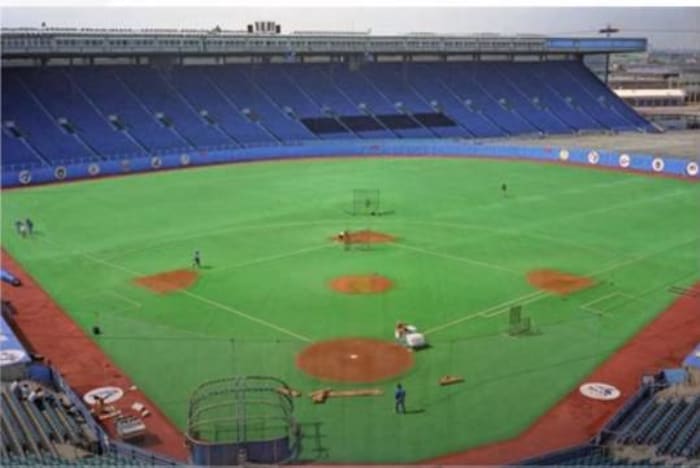
The original home of the Toronto Blue Jays was part of the massive Exhibition Place grounds and was best used for football. While it provided wide-open views for baseball, the lowest rows of seating were still rather far from the playing field, as was the case with most fields that were initially built for football. An open-air stadium, along Lake Ontario, also made for some harsh cold-weather, windy days and nights early and late in the season. While not an easy place to watch baseball, Exhibition Stadium's unintended quirkiness takes us back to a simpler time in baseball history where amenities weren't that big of a deal.
24. Candlestick Park (San Francisco, 1960-1999)
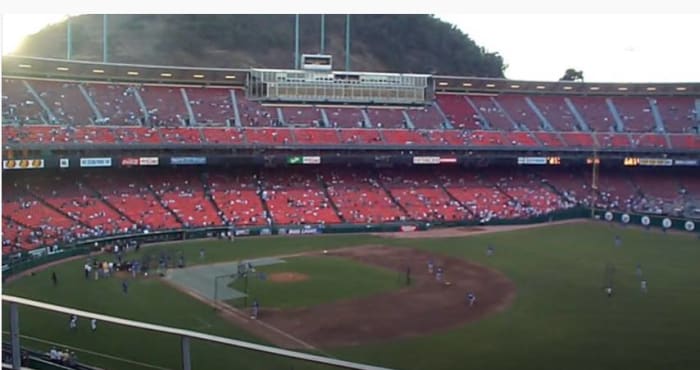
Sometimes the shortcomings of a specific ballpark can be what we miss most. Though regular attendees to Candlestick probably do not miss the harsh winds and chilly temperatures that were staples in the heart of summer for Giants games. Located on Candlestick Point, on the western portion of San Francisco Bay, the park was picked initially because it offered the most open space to building something of that size. For years, catching pop fly balls were an adventure for fielders, and the actual fenced outfield wall was interesting. It wasn't the most pleasant of places to watch baseball, especially at night, but making it through such contests was a victory in itself for dedicated fans.
23. RFK Stadium (Washington D.C., 1961-2007)
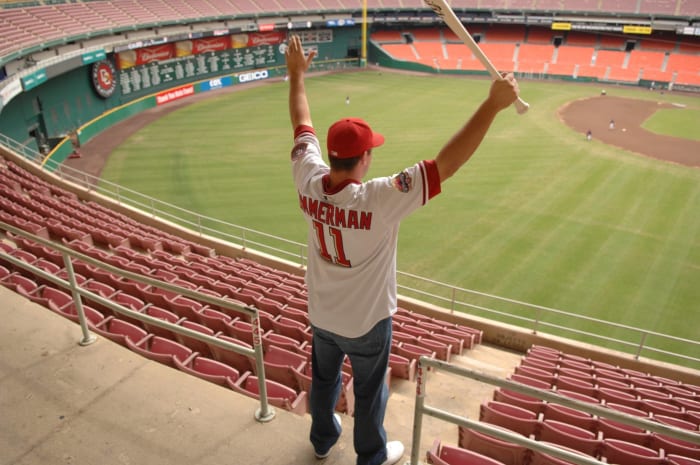
Best known as the home of Washington's professional football team, Robert F. Kennedy, located just east of the United States Capitol, was one of the first "cookie-cutters," multi-purpose stadiums to be built. The Washington Senators played there from 1962-'71 but had just one winning season during that run. Known as a hitter's park during the Senators' tenure, RFK was reconfigured with more spacious dimensions and friendlier to pitchers when the Washington Nationals (2005-'07) briefly called it home after relocating from Montreal.
22. Riverfront Stadium (Cincinnati, 1970-2002)
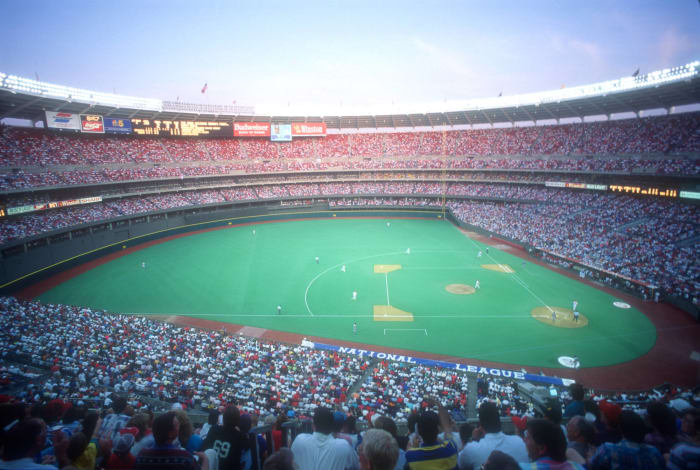
There's reason to miss this "cookie-cutter" staple simply for the atmosphere it generated while Reds' fans cheered on the Big Red Machine teams of the 1970s. Cincinnati is a baseball town and even though the stadium was nothing special, there was something about being there. Watching Sparky Anderson's stars like Pete Rose, Tony Perez, and Johnny Bench put on a show. The quality of baseball played can make even an average stadium feel beloved.
21. Kingdome (Seattle, 1977-1999)

When the Mariners were good (notably with Ken Griffey Jr., Randy Johnson, and Edgar Martinez), the Kingdome was loud and rocking. However, those winning seasons were few and far between. The Kingdome was drab, for the most part. There was almost too much foul territory and upper-deck seats were more than 600 feet from home plate. Also, since the venue was best served for football, some fans in the outfield could not see parts of right and center field. All that said, to the locals, the Kingdome has a special place in their baseball hearts.
20. Hubert H. Humphrey Metrodome (Minneapolis, 1982-2009)

Sterile and rather boring to the eye, the Metrodome was only really appealing to those fans of the Twins. Especially during the 1987 and '91 seasons, when the "Homer Hanky" was truly a Twins' fan favorite and consumed the venue with a collective, swirling frenzy during the club's Word Series runs. Due to the elements associated with weather in the Twin Cities, an indoor, multi-purpose stadium seemed like a good idea, but the Metrodome did not age well. Still, it had its moments of charm.
19. Qualcomm Stadium (San Diego, 1969–2003)
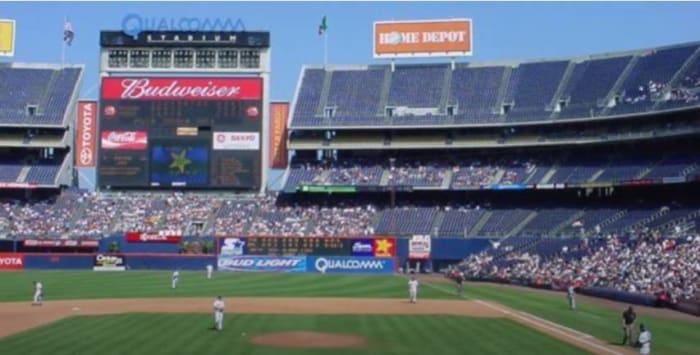
Perhaps best known as Jack Murphy Stadium, and currently SDCCU Stadium. The longtime home of the Padres didn't have the quirkiness of Petco Park, but the sightlines were decent, the weather was usually good and the dimensions were rather fair to both pitchers and hitters. The palm trees behind the outfield wall were a nice touch in later years. At the end of the day, the "Q" or "Jack Murphy" did not stand out, but to Padres fans it was a special place.
18. Olympic Stadium (Montreal, 1977–2004)
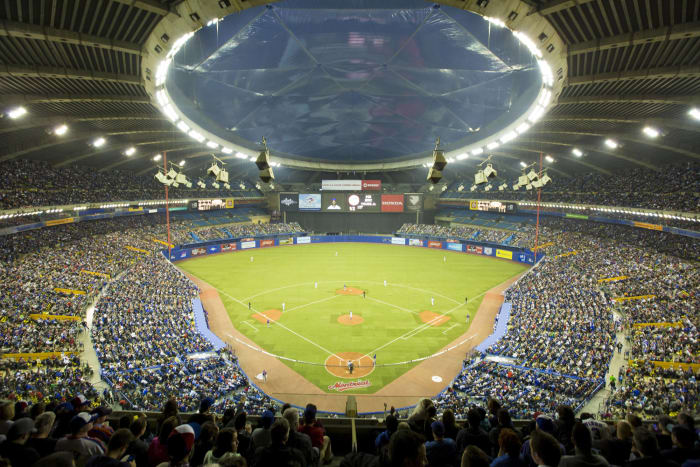
Stade Olympique is still standing, but Major League Baseball has not been played there since 2004. From the poor playing surface to the sterile and massive aesthetics of the ballpark, Olympic Stadium was not a favorite of Montreal Expos' opponents. That said, the stadium is pure nostalgia for baseball fans who miss the Expos and images of Gary Carter, Tim Raines, and Andre Dawson starring for Canada's NL club. Plus, who can forget the in-game antics of famed mascot Youppi!
17. Busch Memorial Stadium (St. Louis, 1966-2005)

Another famed "cookie-cutter" venue, but as time went on, the Cardinals did a nice job of updating the old yard, especially the field itself. For years the artificial turf playing surface would literally burn players' feet when the air temperatures made it into the 90s and the field temp was well over 100. Things were much better in the mid-1990s when the turf was swapped for grass as Busch became a baseball-only facility. A hard-operated, outfield scoreboard was added, along with a grass batter's eye and flags commemorating the retired numbers of Cardinals' greats.
16. Shea Stadium (Queens, N.Y., (1964-2008)
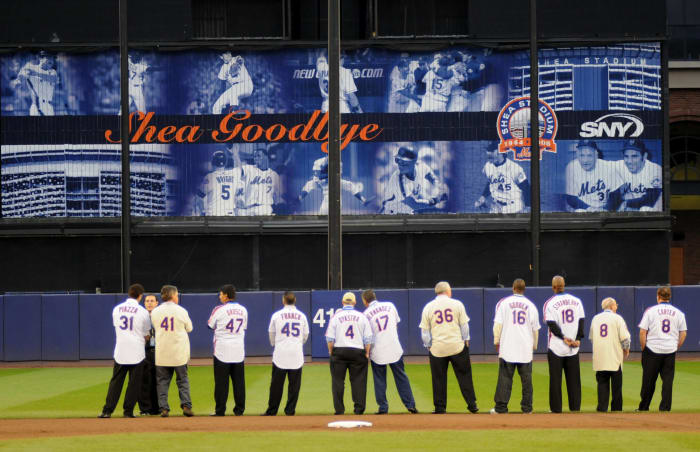
The planes from nearby LaGuardia and the big red home-run apple didn't go away when the New York Mets moved to Citi Field. But those two aspects were always part of the charm, let's face it, of Shea Stadium. Of course, Shea was steeped in history. Four World Series -- those '69 "Miracle Mets," Bill Buckner's error in 1986's Game 6 and 2000 against the Yankees -- were played there. The Beatles in '65 and Billy Joel closed it out in 2008. It might not have the roots of its rival in the Bronx, but Shea's place in history is worth celebrating.
15. League Park (Cleveland, 1891-1946)

The ballyard located in Cleveland's Hough neighborhood was originally built as a wood structure, then renovated with concrete and steel. Home to the National League's Cleveland Spiders and the Indians, League Park was a rather interesting rectangular structure placed within the city grid of Cleveland. The center-field fence was 460 feet away, but just 290 down the right-field line. Of course, a homer to right had to clear a 40-foot fence - roughly three feet higher than Fenway Park's Green Monster.
14. Turner Field (Atlanta, 1997-2016)
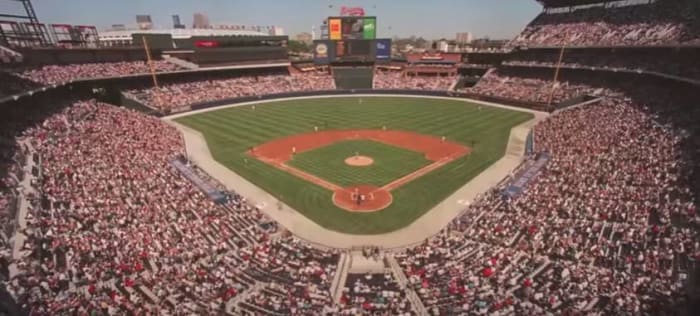
The former Olympic Stadium from the 1996 Summer Games, the converted Turner Field was a needed baseball upgrade from Fulton County Stadium. It had a quality "neo-classic" park vibe, and the in-house restaurant and bars made the fan experience pretty enjoyable. Of course, the outfield upper-deck seating was quite high, while constant downtown traffic issues were blamed for moving the Braves' home park outside the city limits. It has since been reconfigured as a football stadium, and home to the Georgia State Panthers.
13. County Stadium (Milwaukee, 1953-2000)
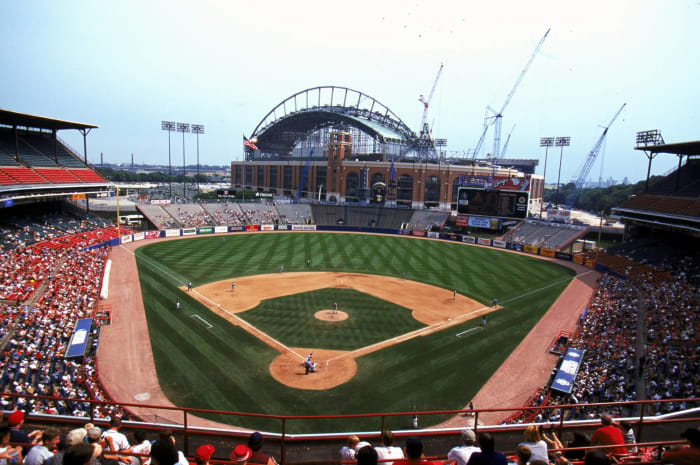
Milwaukee County Stadium was nothing special to the eye, but the experience was pure Midwest baseball at its best. The smell of beer and grilled bratwurst wafted throughout the yard. Not to mention, the Brewers' longtime home was the birthplace of Bernie Brewer's outfield chalet and beer mug, the famous Sausage Race, and the secret stadium sauce. It also provided as a stand-in for Cleveland's Municipal Stadium in the hilarious 1989 comedy Major League.
12. Globe Life Park in Arlington (Arlington, Texas, 1994–2019)

It's rather sad to think a ballpark that was built in the 1990s no longer houses a major-league baseball team. That proved to be the case here, where Rangers certainly upgraded from Arlington Stadium to a solid, retro-classic park. However, the summer Texas heat is still an issue and the ownership felt a venue with a retractable roof like the new Globe Life Field would draw more fans. From an amenities and game-experience standpoint, Globe Life Park in Arlington, originally known as The Ballpark in Arlington did the job.
11. Astrodome (Houston, 1965-1999)

The granddaddy of all indoor, multi-purpose domed sports stadiums. The Astrodome was the first of its kind, dubbed the "Eighth Wonder of the World." It was the first major sports stadium or arena to have an artificial turf playing surface. It had the famed gun-shooting scoreboard and air conditioning -- which was welcomed during those hot Houston summers watching the Astros. Ultimately, the Astrodome lost its luster amid the new "retro" ballparks going up. It remains abandoned with an unknown future.
10. Comiskey Park (Chicago, 1910-1990)
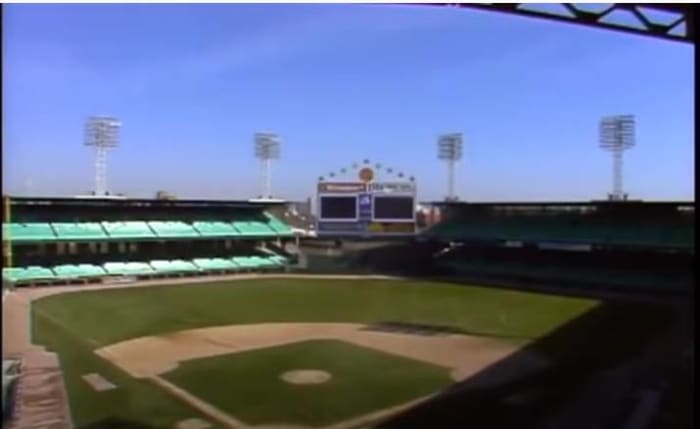
The longtime home of the Chicago White Sox wasn't a beauty, but certainly had the gritty, character of the South Side area it represented. Fans could peel some of the paint off the cement walls in the corridors, but also grab an outdoor shower on a hot day. Roof-shot homers from the likes of Rin Kittle and Harold Baines in the 1980s were as exciting as the exploding center-field scoreboard (that got an update in the current park) fireworks. And who can forget "Disco Demolition" Night?
9. Sportsman's Park (St. Louis, 1902-1966)
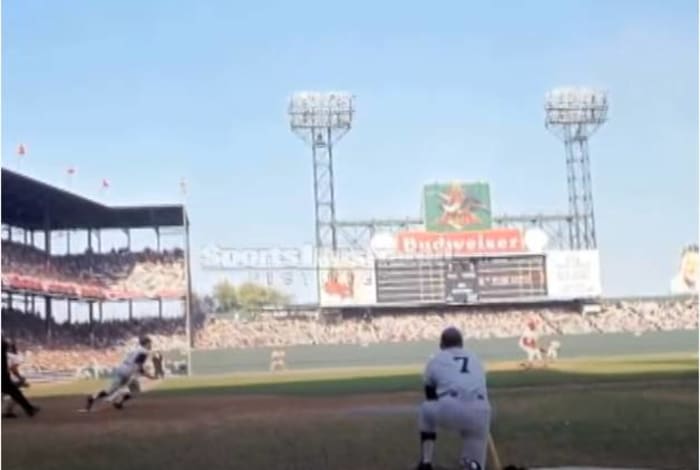
Two St. Louis Major League Baseball clubs called Sportsman's Park home -- the Browns (1902–1953) and the Cardinals (1920–1966). It eventually became known as Busch Stadium but was still Sportsman's Park to the die-hards. The famed scoreboard stood over the uncovered left-field bleachers, while the right-field seats had a roof. It was a good poke to straightaway center field (roughly 422 feet). Though car parking was essentially non-existent, there was that certain, old-thyme feel to the park, which remains beloved to many.
8. Municipal Stadium (Kansas City, 1923-1972)
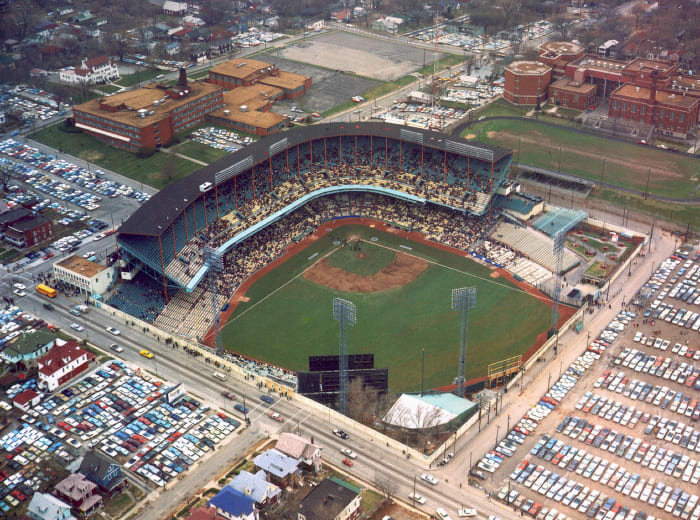
From the historic days of Jackie Robinson starring for the Negro League's Kansas City Monarchs to Charlie Finley's outfield petting zoo or the mechanical home plate, ball-toting "Harvey" with the Kansas City Athletics, this Municipal Stadium was truly something to be cherished. The current-day Kansas City Royals also played there for four seasons. While the physical structure was nothing all that special, what went on inside was truly something special and remains a celebrated part of baseball's history.
7. Crosley Field (Cincinnati, 1912-1970)
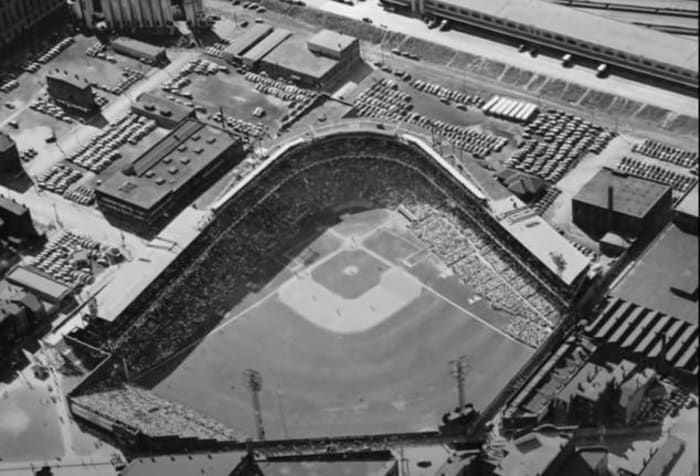
Named after Powel Crosley Jr., a prominent local businessman who bought the Reds (and advertised throughout the park) when the club was struggling during the early 1930s. Crosley Field's most notable claim to fame is that of the first Major League Baseball park to install lights and host night contests -- because more working fans would seemingly be able to attend at night no matter how poorly the team was playing. In time, the stadium wore out its welcome amid the neighborhood and needed an upgrade due to the team's increased success and popularity.
6. Tiger Stadium (Detroit, 1912-1999)
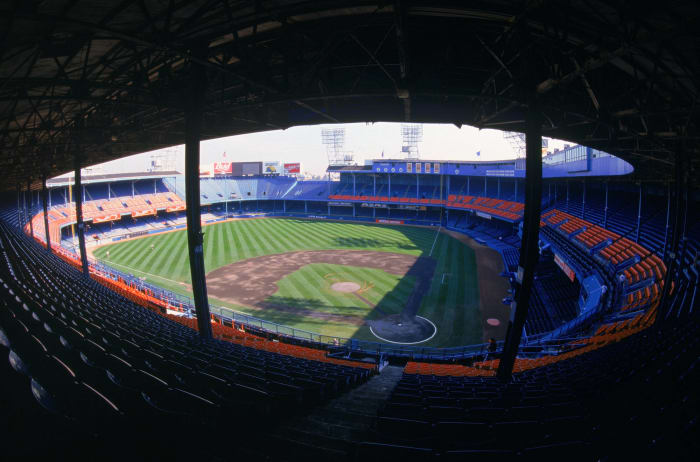
Located "on the corner of Michigan and Trumbull," Tiger Stadium exuded history long after the Tigers left following the 1999 season. Al Kaline, the flag pole in deep left-center field, the double-deck outfield bleacher seats, and Cecil Fielder roof-shot home runs. It was a sad day for Tigers fans when the beloved yard was demolished, but the stadium's historical significance and lasting memories can never be destroyed.
5. Forbes Field (Pittsburgh, 1909-1970)

Forbes Field wasn't the first home of the Pittsburgh Pirates or the last. It was, however, the first steel-and-concrete stadium built in the National League. The playing field at Forbes Field was quite large, and there was a batting cage sitting in the farthest portion of center field for players to use during games. Oftentimes, fans were allowed to sit on the deepest parts of the outfield grass on days when overflow seating was necessary. The Pirates won three of their five World Series titles while playing at Forbes, most notably in 1960 on Bill Mazeroski's walk-off homer in Game 7.
4. Shibe Park (Philadelphia, 1909-1970)

Home to the Philadelphia Athletics and the Philadelphia Phillies, Shibe Park (later to be known as Connie Mack Stadium) was the first baseball stadium built with steel and concrete. It was also hosted the first American League park to host a night game. Of all the historic athletic venues in Philadelphia, Shibe Park, with its intimate setting, upper-deck seating in left field, and high right-field fence to keep neighbors from watching games from inside their homes, might be the most beloved. According to the 2006 book Take Me Out to the Ballpark, Phillies great Richie Ashburn said of the park: "It looked like a ballpark. It smelled like a ballpark. It had a feeling and a heartbeat, a personality that was all baseball."
3. Polo Grounds (Manhattan, N.Y., 1880-1963)

There were four versions of the Polo Grounds, located in Upper Manhattan. Most notably playing host to the New York Yankees, New York Metropolitans, and New York Giants over the years. The third and fourth installments of the park are perhaps the most recognizable with its massive outfield gaps and straightaway center field dimensions -- the same one Willie Mays made "The Catch" during the 1954 World Series -- that sloped downward. Any version of the Grounds was not aesthetically pleasing, but to many, it was their "church."
2. Yankee Stadium (Bronx, N.Y., 1923-2008)
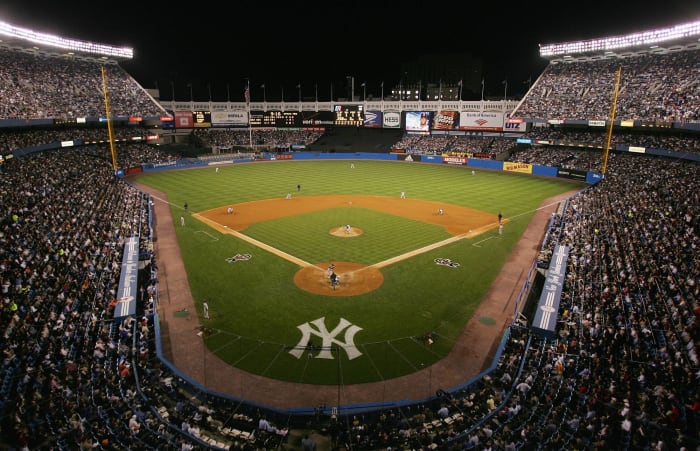
"The Cathedral of Baseball". "The House That Ruth Built." Whatever Yankee fans want to call it, there are many who still hold loyalty to that big ballpark in the Bronx -- and still have issues with its fancy upgrade. While we can talk about what made the physical structure so appreciated (the short porch in right), it's the memories of legendary players (Ruth, Gehrig, Mantle, DiMaggio, Reggie) and plays and games that make it hard for Yankee die-hards and baseball purists to let go and move on.
1. Ebbets Field (Brooklyn, N.Y., 1913-1957)

The famed home of the beloved Brooklyn Dodgers. Located in the Flatbush neighborhood of Brooklyn, there is likely no defuncted or demolished major-league ballpark that still holds a prominent place in the hearts of so many than Ebbets Field. It's iconic, not just in a baseball sense, but from the standpoint of neighborhood pride. The Dodgers and their historic ball diamond defined the borough and often the people who lived there. The spirit of Ebbets lives on with various homages from today's neo-classic parks, most notably the façade of Queens' Citi Field.
A Chicago native, Jeff Mezydlo has professionally written about sports, entertainment and pop culture for nearly 30 years. If he could do it again, he'd attend Degrassi Junior High, Ampipe High and Grand Lakes University.
More must-reads:
- Orioles stud prospect's first taste of majors doesn't last long
- Braves 2B makes speedy recovery from fractured toe
- The 'Active MLB strikeout leaders' quiz
Breaking News
Customize Your Newsletter
 +
+
Get the latest news and rumors, customized to your favorite sports and teams. Emailed daily. Always free!
Use of this website (including any and all parts and
components) constitutes your acceptance of these
Terms of Service and Privacy Policy.

